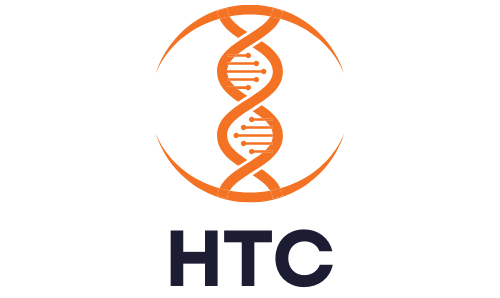Blockchain in Healthcare: The Next Big Thing for Investors?
The healthcare industry is on the brink of a technological revolution, driven by rapid advancements that promise to enhance patient care, streamline operations, and secure sensitive data. Among the myriad of innovations, blockchain technology stands out as a particularly transformative force. Originally conceived as the backbone for cryptocurrencies like Bitcoin, blockchain has since evolved into a versatile tool with applications far beyond its initial scope.
In the realm of healthcare, blockchain's potential is especially compelling. Its unique features—decentralization, immutability, transparency, and security—address many of the longstanding challenges faced by the industry. From securing patient data against breaches to ensuring the authenticity of pharmaceuticals, blockchain is poised to revolutionize how healthcare systems operate.
For investors, this burgeoning field offers a plethora of opportunities. The intersection of blockchain and healthcare is fertile ground for innovation, with startups and established companies alike developing solutions that promise significant returns. As blockchain technology continues to mature, its impact on healthcare is expected to grow, making now the ideal time for investors to explore this promising sector.
In this blog, we will delve into the fundamentals of blockchain technology, explore its applications in healthcare, and examine the investment prospects it presents. Join us as we uncover why blockchain in healthcare could be the next big thing for savvy investors.
Understanding Blockchain Technology
To appreciate the transformative potential of blockchain in healthcare, it is crucial to understand what blockchain technology is and how it operates. At its core, blockchain is a distributed ledger technology that records transactions across multiple computers in a way that ensures the data is secure, transparent, and tamper-proof.
Brief Explanation of Blockchain and Its Basic Principles
A blockchain is a chain of blocks, each containing a list of transactions. These blocks are linked together in chronological order, forming a continuous and unalterable chain. Each transaction added to the blockchain is verified by a network of computers, known as nodes, through a consensus mechanism. This verification process ensures that all copies of the blockchain are identical, preventing any single point of failure or manipulation.
Key Features of Blockchain
1. Decentralization: Unlike traditional centralized databases managed by a single entity, blockchain operates on a decentralized network. Each participant (node) in the network has a copy of the entire blockchain, ensuring that no single point of control or failure exists. This decentralization makes the system more robust and resilient to attacks or data breaches.
2. Immutability: Once a transaction is recorded on the blockchain, it cannot be altered or deleted. This immutability is achieved through cryptographic hashing, which links each block to the previous one. Any attempt to change a block would require altering all subsequent blocks, a feat that is practically impossible due to the computational power required.
3. Transparency: Blockchain technology provides transparency by allowing all participants to view and verify the transactions recorded on the blockchain. This transparency ensures accountability and trust among users, as everyone can see the entire history of transactions.
4. Security: Blockchain employs advanced cryptographic techniques to secure data. Each transaction is encrypted and linked to the previous one, creating a chain that is highly resistant to tampering. Additionally, the decentralized nature of blockchain means that there is no single point of vulnerability, making it significantly more secure than traditional systems.
How Blockchain Works
To illustrate how blockchain works, consider a simple transaction. When a new transaction is initiated, it is broadcast to a network of nodes. These nodes validate the transaction using a consensus mechanism, such as proof-of-work or proof-of-stake. Once validated, the transaction is added to a new block, which is then linked to the previous block, forming a chain. This process repeats continuously, ensuring that the blockchain remains up-to-date and secure.
By understanding these fundamental principles, it becomes clear how blockchain's inherent properties can address many of the challenges faced by the healthcare industry. In the following sections, we will explore these challenges in more detail and examine how blockchain technology can provide effective solutions.
Current Challenges in Healthcare
The healthcare industry, despite its advancements, faces several persistent challenges that hinder its efficiency and effectiveness. These issues range from data security concerns to interoperability obstacles and high administrative costs. Understanding these challenges is essential to appreciate how blockchain technology can offer viable solutions.
Data Security: Issues with Data Breaches and Patient Privacy
One of the most pressing issues in healthcare today is data security. Healthcare organizations handle vast amounts of sensitive patient information, including medical records, personal details, and financial data. This information is a prime target for cybercriminals, and the industry has seen numerous high-profile data breaches in recent years.
Data breaches not only compromise patient privacy but also erode trust in healthcare providers and can lead to significant financial losses. Current centralized systems are vulnerable to attacks, and once breached, unauthorized access can lead to widespread data exposure. Ensuring the confidentiality and integrity of patient data is paramount, but existing security measures often fall short.
Interoperability: Another significant challenge is interoperability, or the ability of different healthcare systems and providers to share and exchange patient data seamlessly. The lack of standardized data formats and communication protocols creates silos of information, hindering the flow of data between various entities.
This fragmentation leads to incomplete patient records, duplicated tests, and delays in diagnosis and treatment. Patients who visit multiple providers may find their health information scattered across different systems, making it difficult for healthcare professionals to obtain a comprehensive view of their medical history. Effective data sharing is crucial for coordinated care, but achieving it remains a significant hurdle.
Administrative Costs: Healthcare administration is notorious for its complexity and inefficiencies. From billing and insurance claims to patient record management, administrative processes are often bogged down by manual tasks, redundant paperwork, and lengthy approval workflows. These inefficiencies contribute to high operational costs, which are ultimately passed on to patients and payers.
The administrative burden not only strains healthcare resources but also diverts attention from patient care. Streamlining these processes is essential for reducing costs and improving the overall efficiency of healthcare delivery. However, existing systems are often rigid and resistant to change, making reform challenging.
The Role of Blockchain in Addressing These Challenges
The challenges of data security, interoperability, and administrative costs underscore the need for innovative solutions. Blockchain technology, with its unique features, offers promising avenues to address these issues. In the following sections, we will explore how blockchain can enhance data security, improve interoperability, and streamline administrative processes, transforming the healthcare landscape and creating new investment opportunities.
How Blockchain Can Address Healthcare Challenges
Blockchain technology offers unique capabilities that can effectively address the major challenges faced by the healthcare industry. Its features of decentralization, immutability, transparency, and security provide innovative solutions for enhancing data security, improving interoperability, and reducing administrative costs.
Enhanced Data Security:
Blockchain's immutability ensures that once data is recorded on the blockchain, it cannot be altered or deleted. This feature is crucial for maintaining the integrity of patient records. Each transaction, such as a medical test result or a prescription, is securely encrypted and linked to the previous transaction, creating a chain that is highly resistant to tampering.
Furthermore, blockchain's decentralized nature means that patient data is not stored in a single, vulnerable location but is distributed across a network of nodes. This distribution significantly reduces the risk of data breaches, as there is no central point of failure. Additionally, blockchain can enable secure data sharing by allowing healthcare providers to grant access to patient records only to authorized individuals, ensuring that patient privacy is maintained.
Improved Interoperability:
Blockchain can address the issue of interoperability by providing a standardized framework for data exchange. By using blockchain, healthcare providers can store patient data in a common format that is easily accessible across different systems and platforms. This standardization eliminates the silos of information that currently plague the industry, enabling seamless data sharing and coordination of care.
Smart contracts, a feature of blockchain technology, can further enhance interoperability. These self-executing contracts automatically enforce the terms of data sharing agreements, ensuring that patient information is shared securely and in compliance with regulatory requirements. This capability allows healthcare providers to access comprehensive patient records, leading to more accurate diagnoses and personalized treatments.
Reduced Administrative Costs:
Blockchain technology can streamline administrative processes by automating tasks and reducing the need for intermediaries. For example, in the case of insurance claims, smart contracts can automatically verify coverage, process claims, and execute payments, eliminating the need for manual intervention and reducing processing times.
By digitizing and automating these processes, blockchain reduces the administrative burden on healthcare providers, allowing them to focus more on patient care. Additionally, the transparency and traceability provided by blockchain can help reduce fraud and errors, further lowering costs.
Blockchain can also improve supply chain management in healthcare by providing a transparent and immutable record of the journey of pharmaceuticals from manufacturer to patient. This traceability ensures the authenticity of drugs, reduces the risk of counterfeit medications, and improves inventory management.
Case Studies and Current Applications
Blockchain technology's transformative potential in healthcare is already being realized through various innovative applications. These real-world examples highlight how blockchain can enhance electronic health records (EHRs), streamline supply chain management, and improve the integrity of clinical trials.
Electronic Health Records (EHRs): Examples of Blockchain-Based EHR Systems
One of the most promising applications of blockchain in healthcare is the management of electronic health records (EHRs). Blockchain-based EHR systems offer a secure, transparent, and efficient way to manage patient data. These systems ensure that patient records are immutable and can only be accessed by authorized individuals, thereby enhancing privacy and security.
Example 1: MedRec
MedRec is a blockchain-based EHR system developed by the MIT Media Lab. It aims to provide patients with a comprehensive, immutable history of their medical records, accessible across different healthcare providers. MedRec uses blockchain to manage authentication, data sharing, and record access, ensuring that patients have control over their own medical data.
Example 2: Medicalchain
Medicalchain is another blockchain platform designed for EHRs. It allows patients to create a single, unified health record that can be securely shared with different healthcare professionals. Medicalchain uses blockchain to ensure the accuracy and integrity of patient records while enabling seamless and secure data exchange.
Supply Chain Management: Tracking Pharmaceuticals and Ensuring Authenticity
The pharmaceutical supply chain is complex and prone to issues such as counterfeiting and inefficiencies. Blockchain technology can address these problems by providing a transparent and traceable system for tracking pharmaceuticals from the manufacturer to the patient.
Example 1: MediLedger
MediLedger is a blockchain platform developed to enhance the pharmaceutical supply chain. It uses blockchain to track the movement of drugs through the supply chain, ensuring their authenticity and reducing the risk of counterfeit medications. By providing an immutable record of each transaction, MediLedger enhances transparency and trust among stakeholders.
Example 2: Chronicled
Chronicled is another company leveraging blockchain to secure the pharmaceutical supply chain. Its platform uses blockchain to verify the provenance and authenticity of drugs, ensuring that patients receive genuine medications. Chronicled's blockchain solution also improves inventory management and reduces costs associated with supply chain inefficiencies.
Clinical Trials: Enhancing Transparency and Data Integrity in Research
Clinical trials are essential for the development of new treatments and therapies, but they often face challenges related to data integrity, transparency, and patient recruitment. Blockchain technology can address these issues by providing a secure and transparent platform for managing clinical trial data.
Example 1: ClinTex
ClinTex is a blockchain platform designed to improve the efficiency and transparency of clinical trials. It uses blockchain to securely store and manage clinical trial data, ensuring its integrity and transparency. ClinTex also provides real-time analytics and insights, helping researchers make informed decisions and accelerate the development of new treatments.
Example 2: PharmaLedger
PharmaLedger is a consortium of pharmaceutical companies and research institutions that uses blockchain to enhance clinical trials. The platform provides a secure and transparent system for managing clinical trial data, from patient recruitment to data analysis. By ensuring the integrity and traceability of data, PharmaLedger helps build trust in the clinical trial process and improves patient outcomes.
Example 3: Notable Labs
As blockchain technology gains traction in healthcare, Notable Labs leads with its focus on precision medicine and rare diseases. Their innovative approach enhances drug discovery, making it faster and more accurate. Although they haven't fully adopted blockchain yet, Notable Labs is well-positioned for future integration, which could improve data security and patient privacy. Investors should watch Notable Labs for their strong foundation in advanced technologies, as blockchain could naturally enhance their precision medicine efforts.
Investment Opportunities in Blockchain Healthcare
As blockchain technology continues to revolutionize healthcare, it opens up a plethora of investment opportunities. From innovative startups to strategic partnerships, the blockchain healthcare market is ripe for investors looking to capitalize on this transformative technology.
Startups and Innovations: Overview of Emerging Companies and Technologies
The intersection of blockchain and healthcare has given rise to a number of innovative startups and emerging technologies. These companies are leveraging blockchain to solve some of the most pressing issues in the industry, and they represent significant opportunities for investors.
Emerging Companies:
1. Patientory: Patientory is a blockchain-based platform focused on securing patient data and enabling efficient data sharing among healthcare providers. It aims to create a secure, patient-centered health information ecosystem.
2. Nebula Genomics: Nebula Genomics uses blockchain technology to provide secure and transparent access to genomic data. By ensuring data integrity and privacy, Nebula Genomics empowers individuals to control their genetic information while contributing to medical research.
3. Hashed Health: Hashed Health is a healthcare innovation firm that uses blockchain to develop solutions for the healthcare supply chain, patient care, and healthcare payments. Its collaborative approach brings together various stakeholders to create impactful blockchain applications.
4. Blockpharma: Blockpharma uses blockchain to combat counterfeit drugs. By tracking the journey of pharmaceuticals from manufacturer to patient, Blockpharma ensures the authenticity and safety of medications.
Market Growth: Statistics and Projections for the Blockchain Healthcare Market
The blockchain healthcare market is experiencing rapid growth, driven by increasing adoption and investment in blockchain technologies. Several key statistics and projections highlight the market's potential:
- According to a report by Research and Markets, the global blockchain in healthcare market is expected to grow from USD 210.62 million in 2018 to USD 3.49 billion by 2025, at a CAGR of 63.85% during the forecast period.
- A Deloitte survey found that 60% of healthcare executives believe that blockchain will be a critical tool for improving interoperability and data sharing.
- Grand View Research projects that the blockchain technology market in healthcare will reach USD 5.61 billion by 2027, driven by the need for secure data exchange and efficient administrative processes.
These statistics indicate a strong and growing interest in blockchain technology within the healthcare sector, making it an attractive area for investment.
Types of Investments: Equity, Venture Capital, and Strategic Partnerships
Investors looking to enter the blockchain healthcare market have several options, each with its own set of benefits and considerations:
1. Equity Investments: Investing in the equity of blockchain healthcare startups provides an opportunity to gain ownership in companies at the forefront of innovation. This type of investment can offer significant returns if the company succeeds, but it also carries the risk associated with early-stage ventures.
2. Venture Capital: Venture capital firms can play a crucial role in funding blockchain healthcare startups. By providing capital and strategic support, venture capitalists can help these companies scale and achieve their growth potential. In return, they receive equity stakes and potential high returns on their investments.
3. Strategic Partnerships: Forming strategic partnerships with blockchain healthcare companies can provide established healthcare organizations with access to cutting-edge technology and innovation. These partnerships can be mutually beneficial, as startups gain resources and market access, while established companies enhance their service offerings and operational efficiency.
Risks and Considerations
While the investment opportunities in blockchain healthcare are promising, it is essential to be aware of the associated risks and considerations. Investors need to navigate regulatory challenges, address technical hurdles, and understand market volatility to make informed decisions.
Regulatory Challenges: Navigating Healthcare Regulations and Compliance
Healthcare is one of the most heavily regulated industries, with strict requirements to protect patient privacy and ensure the integrity of medical records. Blockchain technology, while offering enhanced security and transparency, must comply with regulations such as the Health Insurance Portability and Accountability Act (HIPAA) in the United States and the General Data Protection Regulation (GDPR) in Europe.
Key Considerations:
- Compliance: Blockchain solutions must be designed to comply with existing healthcare regulations. This includes ensuring that patient data is stored and shared in a manner that protects privacy and meets legal requirements.
- Regulatory Uncertainty: The regulatory landscape for blockchain is still evolving. New regulations may emerge as the technology becomes more widespread, potentially impacting the operation and adoption of blockchain solutions in healthcare.
- Cross-Border Issues: Blockchain's decentralized nature can complicate compliance with regulations in different jurisdictions, making it challenging to implement global solutions.
Technical Hurdles: Scalability and Integration with Existing Systems
Blockchain technology, while innovative, faces several technical challenges that must be addressed to ensure its successful implementation in healthcare.
Key Considerations:
- Scalability: Blockchain networks can experience scalability issues, particularly as the volume of transactions increases. Ensuring that blockchain solutions can handle large-scale healthcare data without compromising performance is critical.
- Integration: Integrating blockchain with existing healthcare systems and electronic health record (EHR) platforms can be complex. Compatibility issues and the need for standardization must be addressed to enable seamless data exchange.
- Interoperability: Achieving interoperability between different blockchain platforms and healthcare systems is essential for realizing the full potential of blockchain in healthcare. Developing common standards and protocols is necessary to facilitate this interoperability.
Market Volatility: Assessing the Risks Associated with Blockchain Investments
Investing in blockchain technology, particularly in its early stages, involves a certain level of risk. The market for blockchain in healthcare is still emerging, and various factors can contribute to its volatility.
Key Considerations:
- Market Maturity: The blockchain healthcare market is still in its nascent stages, and many startups are in the early phases of development. While this presents opportunities for high returns, it also involves significant risk, as not all startups will succeed.
- Technological Evolution: Blockchain technology is rapidly evolving, and new innovations or competing technologies could impact the market. Staying informed about technological advancements and trends is crucial for investors.
- Investor Sentiment: The hype surrounding blockchain can lead to market speculation and volatility. Investors need to conduct thorough due diligence and avoid making decisions based solely on market trends or speculation.
The Future of Blockchain in Healthcare
Blockchain technology holds immense promise for the future of healthcare, with potential to revolutionize various aspects of the industry. As we look ahead, it's crucial to consider the long-term potential, evolving use cases, and strategic implications for investors aiming to capitalize on this transformative technology.
Long-term Potential: Predictions for the Next Decade
Over the next decade, blockchain technology is expected to become increasingly integral to healthcare systems worldwide. Predictions for the future include:
1. Widespread Adoption: Blockchain is anticipated to become a standard component of healthcare infrastructure, enabling secure and efficient data management, enhancing patient care, and reducing costs. As more healthcare providers and institutions recognize the benefits, adoption rates are expected to soar.
2. Enhanced Patient Empowerment: Patients will gain greater control over their health data, allowing them to manage their medical records, consent to data sharing, and participate in personalized healthcare initiatives. Blockchain's transparency and security features will play a pivotal role in empowering patients.
3. Advanced Interoperability: Blockchain will facilitate seamless data exchange across different healthcare systems and platforms, breaking down silos and enabling comprehensive patient records. This interoperability will lead to improved coordination of care and better health outcomes.
4. Innovation in Drug Development: Blockchain will streamline the clinical trials process, enhancing transparency, data integrity, and patient recruitment. This will accelerate drug development and bring new treatments to market more efficiently.
Evolving Use Cases: Innovations and New Applications on the Horizon
The applications of blockchain in healthcare will continue to evolve, with several new and innovative use cases emerging:
1. Precision Medicine: Blockchain can support precision medicine initiatives by securely managing and sharing genomic data, ensuring data privacy, and enabling personalized treatment plans based on individual genetic profiles.
2. Telemedicine: Blockchain can enhance telemedicine by providing secure and verifiable identities for patients and healthcare providers, ensuring the integrity of medical consultations, and facilitating secure payments.
3. Health Insurance: Blockchain can transform health insurance by automating claims processing, reducing fraud, and enabling smart contracts that streamline insurance transactions and improve efficiency.
4. Public Health: Blockchain can aid public health efforts by providing secure and transparent tracking of disease outbreaks, vaccination records, and health interventions, enhancing response times and data accuracy.
Strategic Implications: How Investors Can Position Themselves for Success
Investors looking to capitalize on the blockchain healthcare market should consider the following strategic approaches:
1. Diversify Investments: Invest in a diversified portfolio of blockchain healthcare startups and established companies to spread risk and increase the potential for high returns. Look for companies that address different aspects of healthcare, such as EHRs, supply chain management, and clinical trials.
2. Stay Informed: Keep abreast of technological advancements, regulatory changes, and market trends in both blockchain and healthcare. This knowledge will enable investors to make informed decisions and identify emerging opportunities.
3. Partner with Experts: Collaborate with healthcare and blockchain experts to gain insights into the industry and identify promising investment opportunities. Strategic partnerships can provide valuable support and enhance investment decisions.
4. Focus on Compliance: Ensure that investments are in companies that prioritize regulatory compliance and have a clear understanding of the legal landscape. Compliance is critical for the long-term success and scalability of blockchain healthcare solutions.
5. Long-term Perspective: Adopt a long-term investment perspective, recognizing that the integration of blockchain into healthcare systems will take time. Patience and persistence will be key to realizing substantial returns as the technology matures.
Recap: Summary of key points
Blockchain technology is poised to revolutionize the healthcare industry by addressing critical challenges related to data security, interoperability, and administrative efficiency. Key points discussed in this blog include:
- Understanding Blockchain Technology: Blockchain's core features of decentralization, immutability, transparency, and security make it an ideal solution for many healthcare challenges.
- Current Challenges in Healthcare: Issues such as data breaches, interoperability hurdles, and high administrative costs persist in the industry, highlighting the need for innovative solutions.
- How Blockchain Can Address Healthcare Challenges: Blockchain can enhance data security with immutable records, improve interoperability through unified data standards, and reduce administrative costs by streamlining processes and eliminating intermediaries.
- Case Studies and Current Applications: Real-world examples demonstrate how blockchain is already being used to manage electronic health records, track pharmaceuticals, and enhance clinical trials.
- Investment Opportunities in Blockchain Healthcare: The market offers numerous opportunities, from innovative startups to strategic partnerships, with strong growth projections indicating substantial potential returns.
- Risks and Considerations: Investors must navigate regulatory challenges, address technical hurdles, and understand market volatility to make informed decisions.
- The Future of Blockchain in Healthcare: The technology's long-term potential includes widespread adoption, patient empowerment, advanced interoperability, and innovations in drug development and telemedicine.
The integration of blockchain technology in healthcare is not just a futuristic concept but a burgeoning reality with immense potential. For investors, now is the opportune time to explore this dynamic sector. By understanding the technology, recognizing the market's growth potential, and strategically navigating the associated risks, investors can position themselves at the forefront of a healthcare revolution.
Take Action:
- Research: Dive deeper into blockchain technology and its applications in healthcare. Stay informed about the latest trends, innovations, and regulatory developments.
- Network: Connect with industry experts, attend relevant conferences, and join professional groups focused on blockchain and healthcare.
- Invest: Consider diversifying your portfolio by investing in promising blockchain healthcare startups and companies. Look for those with strong regulatory compliance, innovative solutions, and a clear path to scalability.
- Collaborate: Form strategic partnerships with other investors, healthcare providers, and blockchain developers to leverage collective expertise and resources.
By taking these steps, investors can not only capitalize on the current opportunities in blockchain healthcare but also contribute to the advancement of a technology that promises to enhance patient care, reduce costs, and transform the healthcare landscape for the better. The future of healthcare is digital, decentralized, and driven by blockchain. Don't miss out on the chance to be part of this exciting evolution.










